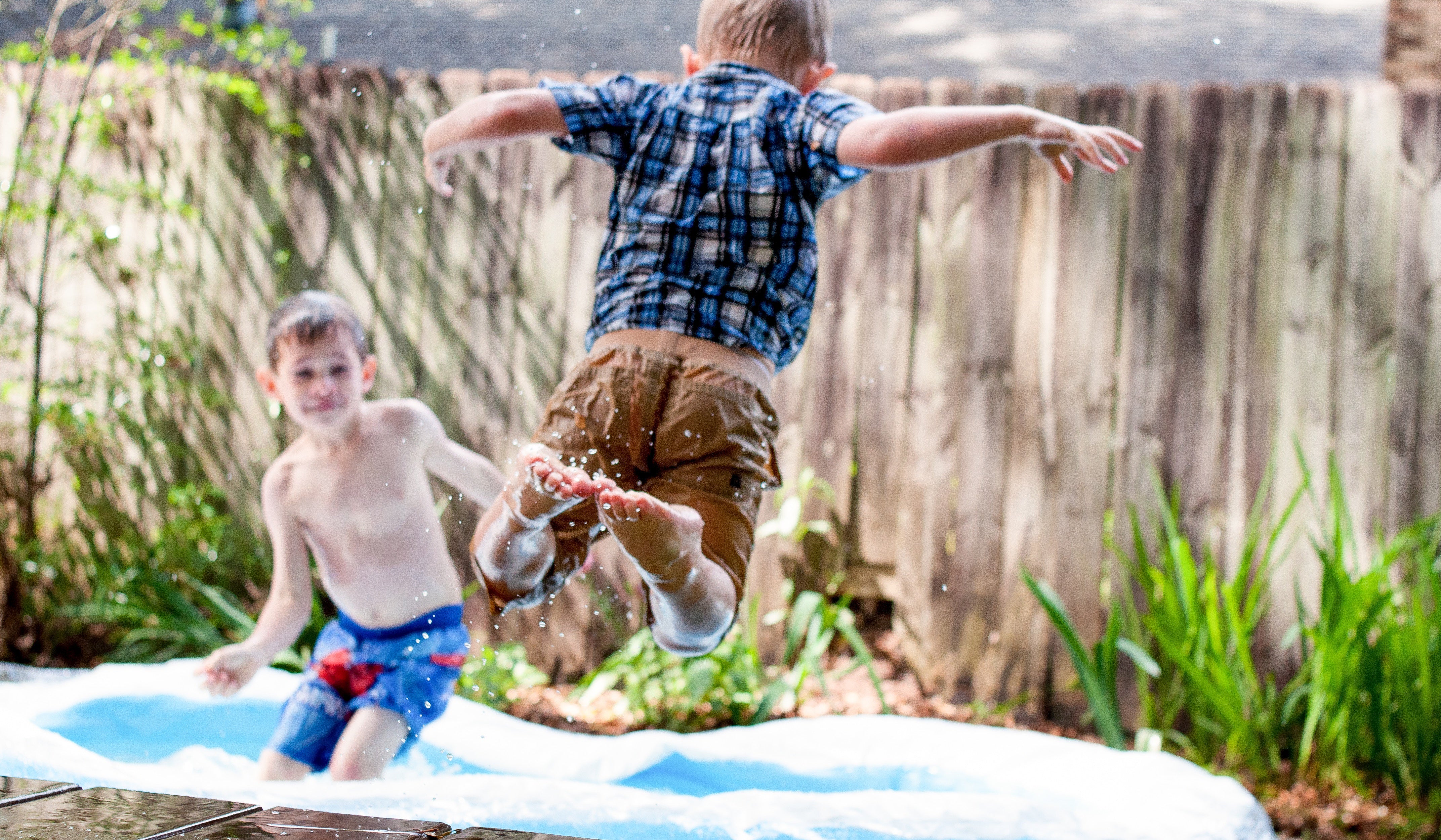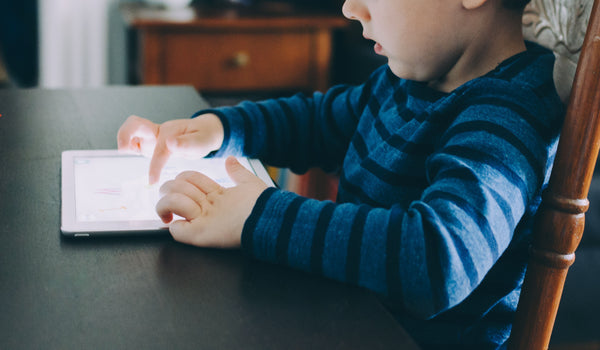The Many Moods of ADHD: More Than Just Hyperactivity

When people think of Attention Deficit Hyperactivity Disorder (ADHD), they often picture a child bouncing off the walls, going from one unfinished activity to the next. But this stereotype is unfair and fairly inaccurate.
Children with ADHD present in various ways and it can be tough for parents to know whether their child’s challenging moods and behaviors stem from their ADHD or something else entirely.
Most parents can easily recognize the classic symptoms – hyperactivity, inattention, and impulsivity. But kids experience a wide variety of moods and behaviors that go beyond the big three.
Some parents are surprised to discover that the problematic moods and behaviors they once attributed to a bad attitude are actually related to the ADHD rather than a character flaw.
What is ADHD?
The National Institute of Mental Health defines ADHD as a brain disorder that is associated with a consistent pattern of inattention, hyperactivity, impulsivity, or a combination of all three, which impacts daily functioning.
The ADHD Brain: Differences in Function, Structure, and Development
ADDitude Magazine recently published an article that explored some recent brain research as it relates to ADHD. The authors discussed the ways in which the ADHD brain differs from the typical brain, indicating that ADHD brains are just wired differently.
Some of the differences include the following:
- Lower dopamine activity levels
- Reduced levels of crosstalk, or the ability for different parts of the brain to communicate with one another
- Anatomically smaller prefrontal cortex, basal ganglia, and parts of the cerebellum
- A different, less specialized part of the brain used to focus attention
Researchers believe that these differences in brain structure directly impact differences in brain function. What’s more, typical behaviors seen in children with ADHD that are sometimes labeled as laziness, messiness, or absent-mindedness, may actually stem from these biological brain differences, rather than behavioral choices.
For example, the part of the brain that activates when we daydream does not quiet down when it’s time to focus the mind for someone with ADHD. In other words, daydreaming continues in the background when it’s time to pay attention. Though it might look like they are disengaged or uninterested, the person with ADHD may not be able to devote their total attention because of the way their brain functions.
How do I know if my child has ADHD?
While it can be difficult for a parent to distinguish between mental health symptoms and typical developmental challenges in their child, there are loads of resources to guide you.
The American Psychiatric Association’s Diagnostic and Statistical Manual, Fifth edition (DSM-5) lists the comprehensive criteria required to receive a diagnosis of ADHD. You can review the entire criteria list on the Center for Disease Control and Prevention’s website in their ADHD section, but here is a basic overview of the most common symptoms and behaviors:
Common Symptoms and Behaviors
- Hyperactivity – action-oriented behavior, trouble staying seated for extended periods of time, trouble with quiet play, difficulty staying in one place, fidgety or antsy movement, tendency to run, climb, or move around even when not appropriate to do so
- Inattention – difficulty staying on task, trouble focusing for extended periods of time, easily distracted, avoidance of non-preferred tasks that require concentration, disorganization
- Impulsivity – tendency to act without considering the consequences, seeming lack of patience, communication problems like interrupting others or blurting things out, risky or unsafe behavior
What You May Not Know About ADHD
Most parents understand that their child with ADHD may struggle with organization, sitting still, staying focused, and completing assigned tasks. However, there are some lesser-known symptoms and behaviors that are not so obviously attributed to ADHD.
In an article about commonly misdiagnosed ADHD symptoms and behaviors, ADDitude Magazine shared some of ADHD markers that sometimes get mistaken for other mental health issues. In her podcast, Parenting ADHD and Autism, prominent ADHD expert and mom, Penny Williams, discusses some elements of ADHD that go beyond the classic inattention, hyperactivity and impulsivity in her Parenting ADHD podcast as well.
The Many Moods of ADHD: Lesser Known Symptoms and Behaviors
- Anxiety or Depression – Kids with ADHD are at risk for anxiety and depression. What looks like irritability, resistance, or squirmy behavior may actually be driven by anxiety or depression.
- Mood Swings – Kids with ADHD have difficulty with their executive brain functions and this impacts their ability to regulate emotions. These shifts in moods are usually associated with specific triggers in the environment, though these triggers may be difficult for family members to recognize.
- Low Frustration Tolerance, Inflexibility, and Explosiveness – Some might call it a stubborn personality, but children with ADHD are sometimes unable to accept when things do not go their way. Because of their brain differences, they often have unique perceptions of time. So, when they want something, and they want it now, it’s harder for them to imagine a different point in time. They can’t imagine waiting for their heart’s desire. They need it now. This behavior can read as demanding, explosive, or oppositional, but in reality, their brains do not allow them to see the bigger picture in that moment.
- Shame and Low Self-Esteem: Kids with ADHD struggle to manage their emotions, act impulsively, behave in unexpected or inappropriate ways, and sometimes have meltdowns. These experiences can be embarrassing and scary to go through, especially when the children themselves don’t understand what’s happening. What’s more, the ways family members, teachers, peers, and strangers respond to them can directly impact their mood. If their behaviors and moods are misunderstood from the onset, the negative reactions of others can lead to feelings of shame and low self-esteem.
Ways to Support a Child with ADHD
There are loads of strategies, tools, and supports available for families who are touched by ADHD. Some of the most common supports are listed below:
Strategies
- Specialized Parenting Tactics and a Consistent Behavior Management System
- Consistent Routines and Calendars to stay organized
- Regular Exercise and High-Impact Activities
- Use of Visual Aids to Break Down Tasks into Manageable Steps
- Positive and Consistent School Supports in Place
- Use of Positive Reframes:
- Behaviors are related to how the brain is wired rather than a behavioral choice to be oppositional.
- ADHD kids have superpowers.
Tools
- Parenting ADHD and Autism Podcast – Let parent and ADHD expert, Penny Williams, shares her wisdom and life experiences to help you support your child with ADHD. A wonderful resource for parents on the go!
- My Moods, My Choices Visual Tools and Charts – These tools are an amazing resource for parents and kids alike. The visual prompts and straightforward language work extremely well for kids with ADHD. The My Moods, My Choices tools are great for parents, kids, and mental health professionals.
- ADDitude Magazine and free downloadable tools – This magazine is the go-to resource for the latest information and research on all things ADHD.
Support
- Support Groups
- Therapy:
- Occupational Therapy
- Behavior Therapy and CBT
- Family therapy
- Emotion regulation
- Medication (stimulants and non-stimulants)
NOTE: The American Academy of Pediatrics (AAP) recommends the use of behavior therapy in lieu of medication for children between the ages of 4 and 5. The AAP further encourages professionals and parents to try medication only after behavior therapy proves ineffective. Additionally, for children and adolescents between the ages of 6-18, the AAP prefers that FDA-approved ADHD medications are administered alongside evidence-based behavior therapy.
Hayley Gallagher, LPC, is a licensed professional counselor, writer, and mom, with more than 15 years of experience working with kids and families. She is the creator of thecenteredparent.com – where she shares her expertise on parenting, mental health, self-care, and family wellness.
Also in Blogs

Does Your Child Live in a High-Conflict Environment?

“What's On?” The Impact Of Media On Kid's Emotional Well-being

